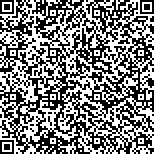| 引用本文: | 李从艺,曹旺杰,黄勇,苏韫,龚红霞,冷光现,李莉霞,曾元丁.基于HIF-1α/NLRP3信号通路探讨大补肺汤对高原低氧大鼠急性肺损伤的干预作用[J].中国现代应用药学,2024,41(6):736-742. |
| LI Congyi,CAO Wangjie,HUANG Yong,SU Yun,GONG Hongxia,LENG Guangxian,LI Lixia,ZENG Yuanding.Intervention Effect of Dabufei Decoction on Acute Lung Injury in Rats with High Altitude Hypoxia Based on HIF-1α/NLRP3 Signaling Pathway[J].Chin J Mod Appl Pharm(中国现代应用药学),2024,41(6):736-742. |
|
| |
|
|
| 本文已被:浏览 913次 下载 511次 |

码上扫一扫! |
|
|
| 基于HIF-1α/NLRP3信号通路探讨大补肺汤对高原低氧大鼠急性肺损伤的干预作用 |
|
李从艺1,2,3, 曹旺杰1,2,3, 黄勇1,2,3, 苏韫1,2,3, 龚红霞1,2,3, 冷光现4, 李莉霞5, 曾元丁1,2,3
|
|
1.甘肃中医药大学基础医学院,兰州 730000;2.甘肃省高校重大疾病分子医学与中医药防治研究省级重点实验室,兰州 730000;3.敦煌医学与转化教育部重点实验室,兰州 730000;4.兰州大学第二医院,兰州 730000;5.天水市中西医结合医院,天水 741000
|
|
| 摘要: |
| 目的 探讨大补肺汤通过调控HIF-1α/NLRP3信号通路及相关分子的表达,从而对高原低氧大鼠急性肺损伤的干预作用。方法 SPF级SD大鼠60只随机分为空白组,模型组,阳性药物组,大补肺汤高、中、低剂量组,每组10只。适应性饲养3 d后给药,空白组和模型组大鼠灌胃给予等量生理盐水;大补肺汤高、中、低剂量组分别连续灌胃大补肺汤14 d;阳性药物组给予地塞米松,腹腔注射,进舱前连续给药3 d。除空白组外,第15天起各组大鼠于实验动物低压模拟舱中进行低氧暴露,连续3 d。最后,检测大鼠肺组织湿干重比(wet to dry ratio,W/D);HE染色法观察大鼠肺组织形态;ELISA法检测血清中IL-1β、IL-18的水平;Western blotting与RT-qPCR法分别检测大鼠肺组织中HIF-1α、NLRP3、GSDMD、caspase-1蛋白和mRNA表达。结果 W/D值结果表明,与空白组相比,模型组大鼠W/D显著升高(P<0.01);与模型组相比,阳性药物组及大补肺汤高、中、低剂量组大鼠W/D显著降低(P<0.01或P<0.05)。HE结果显示,与空白组相比,模型组大鼠肺组织可见肺泡间隔增厚,肺间质充血、水肿,炎性细胞浸润,肺泡腔内可见少量渗出;与模型组相比,阳性药组及大补肺汤高、中、低剂量组肺泡壁增厚减轻,肺间质充血、水肿及炎性细胞浸润明显减轻。ELISA结果显示大鼠血清中IL-1β、IL-18水平在模型组中均显著高于空白组(P<0.01);与模型组相比,阳性药组及大补肺汤高、中、低剂量组血清中IL-1β、IL-18水平均显著下降(P<0.05或P<0.01)。此外,Western blotting与RT-qPCR结果显示,与空白组相比,模型组大鼠肺组织HIF-1α、NLRP3、GSDMD和caspase-1蛋白及mRNA相对表达显著升高(P<0.01);与模型组相比,阳性药组及大补肺汤高剂量肺组织HIF-1α、NLRP3、caspase-1、GSDMD蛋白及mRNA表达显著降低(P<0.05或P<0.01),大补肺汤中剂量肺组织HIF-1α、NLRP3、caspase-1、GSDMD蛋白表达显著降低且HIF-1α、caspase-1 mRNA表达降低(P<0.05),大补肺汤低剂量肺组织HIF-1α、GSDMD蛋白表达降低(P<0.05)。阳性药物组及大补肺汤高剂量组作用效果更显著。结论 大补肺汤可调控HIF-1α/NLRP3信号通路,抑制细胞焦亡、减轻炎症反应,对高原低氧大鼠急性肺损伤具有一定的保护作用。 |
| 关键词: 急性肺损伤 高原低氧 HIF-1α NLRP3 大补肺汤 炎症反应 |
| DOI:10.13748/j.cnki.issn1007-7693.20223230 |
| 分类号:R285.5 |
| 基金项目:甘肃省中医药管理局项目(GSKP-2021-32);甘肃省高校中(藏)药化学与质量研究重点实验室开放基金(zzy-2019-06);敦煌医学与转化教育部重点实验室开放基金(DHYX20-03);甘肃省自然科学基金项目(21JR11RA144) |
|
| Intervention Effect of Dabufei Decoction on Acute Lung Injury in Rats with High Altitude Hypoxia Based on HIF-1α/NLRP3 Signaling Pathway |
|
LI Congyi1,2,3, CAO Wangjie1,2,3, HUANG Yong1,2,3, SU Yun1,2,3, GONG Hongxia1,2,3, LENG Guangxian4, LI Lixia5, ZENG Yuanding1,2,3
|
|
1.School of Basic Medicine, Gansu University of Traditional Chinese Medicine, Lanzhou 730000, China;2.Gansu Provincial Key Laboratory of Molecular Medicine and Traditional Chinese Medicine for Major Diseases, Lanzhou 730000, China;3.Key Laboratory of Dunhuang Medicine and Transformation at Provincial and Ministerial Level, Lanzhou 730000, China;4.The Second Hospital of Lanzhou University, Lanzhou 730000, China;5.Tianshui Integrated Traditional Chinese and Western Medicine Hospital, Tianshui 741000, China
|
| Abstract: |
| OBJECTIVE To investigate the intervention effect of Dabufei decoction on acute lung injury in rats with high altitude hypoxia by regulating the expression of the HIF-1α/NLRP3 signaling pathway and related molecules. METHODS Sixty SPF SD rats were randomly divided into blank group, model group, positive drug group, Dabufei decoction high-dose, medium-dose, and low-dose groups with 10 rats in each group. After 3 d of adaptation to feeding, the rats in the blank group and model group were given the same amount of normal saline by gavage, and the rats in Dabufei decoction high-dose, medium-dose, and low-dose groups were given gavage for 14 d, respectively. The positive drug group was given dexamethasone by intraperitoneal injection for three consecutive days before entering the chamber. Except for the blank group, the rats in each group were exposed to hypoxia in the experimental animal low-pressure simulation chamber from the 15th day for three consecutive days. At the end of the experiment, the wet to dry ratio(W/D) of the rat lung tissue was detected. The morphology of lung tissue was observed by HE staining. ELISA detected the levels of IL-1β and IL-18 in serum. Western blotting and RT-qPCR were used to detect the protein and mRNA expressions of HIF-1α, NLRP3, GSDMD, and caspase-1 in the lung tissue of rats. RESULTS The W/D value showed that compared with the blank group, the W/D of the model group was significantly increased(P<0.01). Compared with the model group, the W/D of rats in the positive drug group, Dabufei decoction high-dose group, medium-dose, and low-dose groups was significantly decreased(P<0.01 or P<0.05). HE results showed that compared with the blank group, alveolar septum thickening, pulmonary interstitial congestion, edema, inflammatory cell infiltration, and a small amount of exudation in the alveolar cavity were seen in the lung tissue of the model group. Compared with the model group, the thickening of alveolar walls in the positive drug group, Dabufei decoction high-dose group, medium-dose, and low-dose groups were reduced, and the pulmonary interstitial congestion, edema, and inflammatory cell infiltration were significantly reduced. ELISA results showed that IL-1β and IL-18 in rat serum were significantly higher in the model group than in the blank group(P<0.01). Compared with the model group, the levels of IL-1β and IL-18 in the serum of the rats in the positive drug group, Dabufei decoction high-dose group, medium-dose, and low-dose groups were significantly decreased(P<0.05 or P<0.01). Moreover, the results of Western blotting and RT-qPCR showed that compared with the blank group, the relative protein and mRNA expressions of HIF-1α, NLRP3, GSDMD, and caspase-1 in the lung tissue of the model group were significantly increased(P<0.01). Compared with the model group, the relative protein and mRNA of HIF-1α, NLRP3, caspase-1 and GSDMD in the positive drug group and Dabufei decoction high-dose group were significantly decreased(P<0.05 or P<0.01), the relative protein of HIF-1α, NLRP3, caspase-1 and GSDMD in Dabufei decoction medium-dose group were significantly decreased and HIF-1α, caspase-1 mRNA were significantly decreased(P<0.05), the relative protein of HIF-1α and GSDMD in the low-dose group was decreased(P<0.05). The positive drug group and Dabufei decoction high-dose group had the more significant effect. CONCLUSION Dabufei decoction can regulate the HIF-1α/NLRP3 signaling pathway, inhibit pyroptosis and reduce inflammation, and has a certain protective effect on acute lung injury in rats with high altitude hypoxia. |
| Key words: acute lung injury high altitude hypoxia HIF-1α NLRP3 Dabufei decoction inflammatory response |
|
|
|
|
